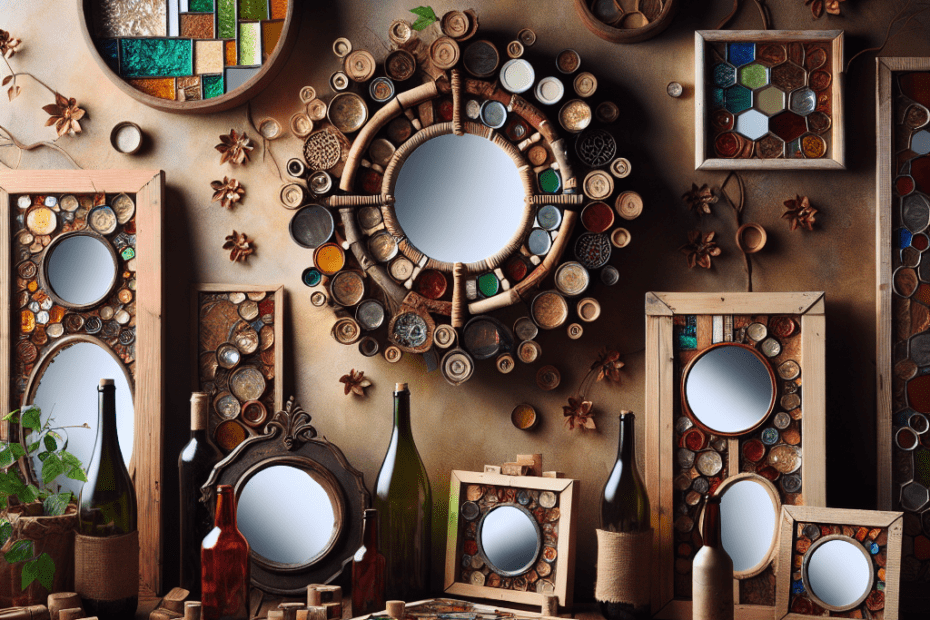“`html
DIY Decorative Mirrors: Crafting from Recycled Materials
They often find themselves searching for creative ways to enhance their living spaces while also being environmentally responsible. DIY decorative mirrors from recycled materials provide an ideal opportunity to merge creativity with sustainability. Not only do these mirrors serve a functional purpose, but they also add a unique charm to home decor.
Why Choose DIY Decorative Mirrors?
More than ever, there’s a growing consciousness about the impact of waste and the importance of recycling. According to the Environmental Protection Agency (EPA), the recycling rate in the United States has increased from less than 7 percent in 1960 to about 32 percent in 2018. By repurposing old materials into decorative mirrors, individuals can play a part in reducing waste.
DIY decorative mirrors also allow for personal expression and creativity. Each piece can be tailored to one’s specific taste, making it a perfect addition to any room. From utilizing old window frames to transforming used CDs, the possibilities are endless.
Materials You Can Recycle
| Material | Potential Use |
|---|---|
| Old Window Frames | Framing mirror glass |
| CDs | Creating mosaic patterns |
| Broken Jewelry | Decorative embellishments |
| Wood Pallets | Mirror borders |
| Plastic Bottles | Textured designs |
Each of these materials, often deemed waste, can bring a unique element to a decorative mirror. The key is to think creatively and see the potential in what others might discard.
Step-by-Step Guide to DIY Decorative Mirrors
- Gather Materials: Begin with selecting the recycled materials you wish to use. Cleaning them thoroughly is essential.
- Design Your Mirror: Sketch a design or have a clear idea of how the final piece should look. Consider the space where it will hang.
- Prepare the Base: Use a sturdy backing such as cardboard or plywood to support the mirror.
- Attach the Mirror: Secure a piece of mirror glass to the base using a strong adhesive.
- Add Decorative Elements: Affix the chosen recycled materials around the mirror. Utilize glue or nails, ensuring everything is firmly in place.
- Finalize and Inspect: Once all elements are attached, let it dry completely before inspecting for any loose parts.
With patience and attention to detail, they can craft a stunning DIY decorative mirror that rivals store-bought alternatives.
Key Takeaways
- DIY decorative mirrors merge creativity and eco-friendliness.
- Recycled materials such as window frames and CDs can be repurposed for mirror design.
- Creating decorative mirrors encourages personal expression and supports sustainability efforts.
- Following a structured process helps ensure a successful and durable finished product.
FAQs
- How sustainable is making DIY decorative mirrors?
- Making DIY decorative mirrors from recycled materials supports waste reduction and encourages reuse, aligning with sustainable practices.
- What tools do I need for this project?
- Basic crafting tools like scissors, glue, and a utility knife are needed. For harder materials, a drill or hammer might be necessary.
- Can kids help with making decorative mirrors?
- Yes, many parts of the process are suitable for kids with supervision, such as designing and simple gluing.
- What type of mirrors should be used?
- Any flat mirror glass, often available from craft stores, can be used for these projects.
- How can I make sure my mirror design is unique?
- Experimenting with different recycled materials and personalizing the design will help create a unique piece.
“`
